In colony counting, we often encounter such a situation that many different types of colonies grow in the petri dishes: fungi, bacteria, mold, actinomycetes, etc. Different types of colonies often have different colors and different growth forms. Especially for molds and actinomycetes, their surfaces are often in the form of crushed particles. The density of the crushed particles is different. The density in the middle is high and the color is dark. The density on the edges is low and the color is light. It is much larger than normal colonies. Figure 1 shows three petri dishes containing a mixture of mold and other bacteria. 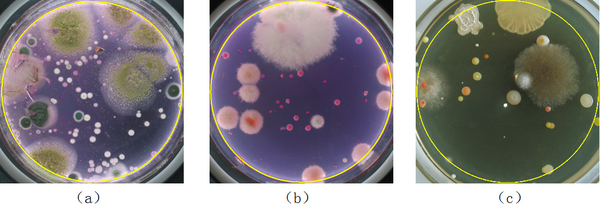
Figure 1 Petri dish with mixed growth of multiple strains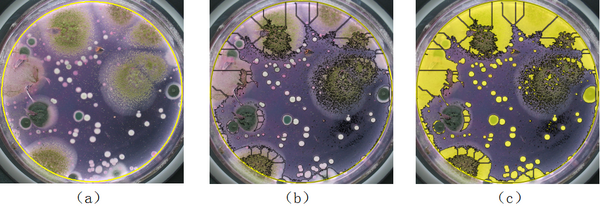
Figure 2 The processing results of traditional image segmentation technology on the mixed situation of multiple strains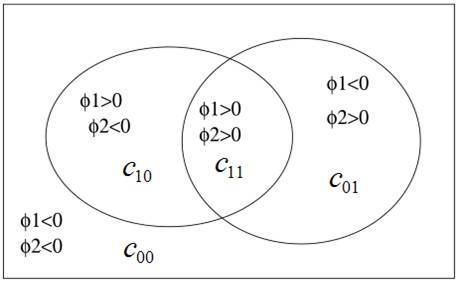
Figure 3 Schematic diagram of two-phase level set


Figure 4 Conversion from the original image layer L0 to the new image layer L1
Figure 5 Segmentation effect based on multi-level level set frame model

Figure 1 Petri dish with mixed growth of multiple strains
This multi-species mix, especially the presence of molds and actinomycetes, poses difficulties for automated colony counting. This is because the current automated colony counting is based on image segmentation technology, and image segmentation is mainly based on the difference between the target and the background, such as the grayscale difference, color difference, or edge contour of the two. Mutagenicity and so on.
Figure 2 shows the segmentation effect of the traditional image segmentation technique on a multi-species mixed dish containing mold. Among them, Figure 2-a is the original image of the petri dish, Figure 2-b is the segmentation result of the traditional image segmentation technology, and Figure 2-c is the color filling of the segmented particles for easy observation. It is not difficult to see: (1) Because the surface of the mold is in the form of broken particles, the image segmentation divides it into small particles. (2) The color of the surface of the mold changes, and its edges are milky white clouds, which are close to other white colonies after being converted into grayscale; and the dark green in the middle is close to the grayscale of the background after being converted into grayscale. This leads to the traditional gray-scale segmentation technology that inevitably treats the edge part as a colony type and the center part as a background type. (3) The cloudiness or ambiguity at the edge of the mold leads to no obvious change in the edge gradient, which makes it impossible to use the edge gradient segmentation technology.
Figure 2 shows the segmentation effect of the traditional image segmentation technique on a multi-species mixed dish containing mold. Among them, Figure 2-a is the original image of the petri dish, Figure 2-b is the segmentation result of the traditional image segmentation technology, and Figure 2-c is the color filling of the segmented particles for easy observation. It is not difficult to see: (1) Because the surface of the mold is in the form of broken particles, the image segmentation divides it into small particles. (2) The color of the surface of the mold changes, and its edges are milky white clouds, which are close to other white colonies after being converted into grayscale; and the dark green in the middle is close to the grayscale of the background after being converted into grayscale. This leads to the traditional gray-scale segmentation technology that inevitably treats the edge part as a colony type and the center part as a background type. (3) The cloudiness or ambiguity at the edge of the mold leads to no obvious change in the edge gradient, which makes it impossible to use the edge gradient segmentation technology.

Figure 2 The processing results of traditional image segmentation technology on the mixed situation of multiple strains
The image segmentation technology based on the level set active contour model is currently the most advanced image processing technology in the world. This technology combines the level set and the active contour model. In the process of minimizing the energy functional, the active contour is continuously approaching the target and the target is segmented. This feature is especially suitable for the detection of mold. In fact, after years of research, Hangzhou Xunshu Technology Co., Ltd. has successfully applied the level set active contour model to solve the detection of mold actinomycetes, etc., and achieved ideal results (see our company website for details) "Colony Counting_Innovative Technology (1 ~ 3)").
But when the mold actinomycetes is mixed with other strains, the problem becomes more complicated. At this time, the level set active contour model is often effective for one type of colony, but not good for another type of colony. After adjusting the model parameters or constraints, it is effective for another colony, and the effect on this colony is not good. In fact, what the above-mentioned petri dish shows is a complex problem with multiple species, multiple targets, and multiple characteristics. Using a single level set active contour model has been unable to achieve the desired results. Aiming at the problem of multi-object and multi-feature segmentation, there are two main methods that are currently studied internationally: (1) multi-phase CV model and (2) multi-level level set frame model.
1. Multiphase CV model A multiphase level set segmentation algorithm proposed by Chan and Vese, namely the multiphase CV model [1]. After determining the number of target categories, the algorithm uses m level set functions to constrain each other's segmentation, and can use m level set functions to represent 2m non-overlapping regions, so as to avoid the existence of vacuums within regions or overlapping between regions.
The energy function of the multiphase CV model is:
But when the mold actinomycetes is mixed with other strains, the problem becomes more complicated. At this time, the level set active contour model is often effective for one type of colony, but not good for another type of colony. After adjusting the model parameters or constraints, it is effective for another colony, and the effect on this colony is not good. In fact, what the above-mentioned petri dish shows is a complex problem with multiple species, multiple targets, and multiple characteristics. Using a single level set active contour model has been unable to achieve the desired results. Aiming at the problem of multi-object and multi-feature segmentation, there are two main methods that are currently studied internationally: (1) multi-phase CV model and (2) multi-level level set frame model.
1. Multiphase CV model A multiphase level set segmentation algorithm proposed by Chan and Vese, namely the multiphase CV model [1]. After determining the number of target categories, the algorithm uses m level set functions to constrain each other's segmentation, and can use m level set functions to represent 2m non-overlapping regions, so as to avoid the existence of vacuums within regions or overlapping between regions.
The energy function of the multiphase CV model is:
![]()
Where u0 is the original image data, cI is the average gray value of the first area, xI is the level set representation of the first area, and Фi is the i-th level set function. Taking the segmentation of a four-phase image as an example, two level set functions Ф1 and Ф2 are introduced. Correspondingly, two initial contours must be set, and the image u0 is divided into four non-overlapping regions:

Then the energy functional evolves to:
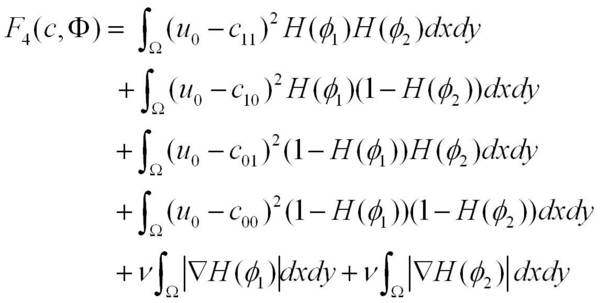
Among them, the components in Φ = (φ1, φ2), c = (c11, c10, c01, c00) represent the average gray level of the image u0 in the regions of Ω11, Ω12, Ω21, and Ω22, as shown in Figure 3.

Figure 3 Schematic diagram of two-phase level set
The two contour short lines in this model evolve simultaneously, and the corresponding level set functions are also iterated. The gradient descent flow formula can be obtained by solving the Euler-Lagrange equation corresponding to the above energy function:


The gray averages c11, c10, c01 and c00 can be updated in each iteration in the following manner:

2. Multi-layer level set frame [2]
Unlike the multi-phase CV model, which uses multiple level set functions, the multi-level level set framework is based on the concept of a layer and uses only a level set function based on the CV model in a hierarchical evolutionary way. Multi-object segmentation is a serial multi-phase segmentation algorithm.
Define the original layer as
Unlike the multi-phase CV model, which uses multiple level set functions, the multi-level level set framework is based on the concept of a layer and uses only a level set function based on the CV model in a hierarchical evolutionary way. Multi-object segmentation is a serial multi-phase segmentation algorithm.
Define the original layer as
![]()
among them,  Represents the i-th area of ​​the l-th target. lm represents the number of regions of the type l target, and union
Represents the i-th area of ​​the l-th target. lm represents the number of regions of the type l target, and union  Represents the set of the lth type of target,
Represents the set of the lth type of target, 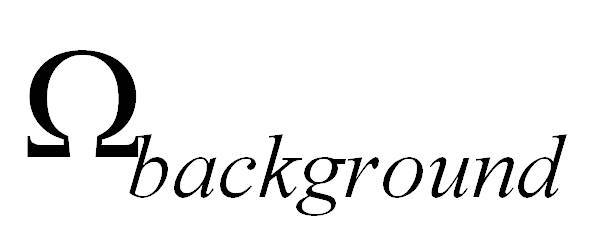 As the background area.
As the background area.
First, use a single level set to segment the original layer L0, extract the first type of target area, and then use the gray average value of the area other than the first type of target area to mask the first type of target area to generate a new background area , The layer status becomes:
, The layer status becomes:
 Represents the set of the lth type of target,
Represents the set of the lth type of target,  As the background area.
As the background area. First, use a single level set to segment the original layer L0, extract the first type of target area, and then use the gray average value of the area other than the first type of target area to mask the first type of target area to generate a new background area
 , The layer status becomes:
, The layer status becomes: 
The conversion process from the original layer L0 to the new layer L1 is shown in Figure 4. The original layer L0 contains two types of targets  with
with 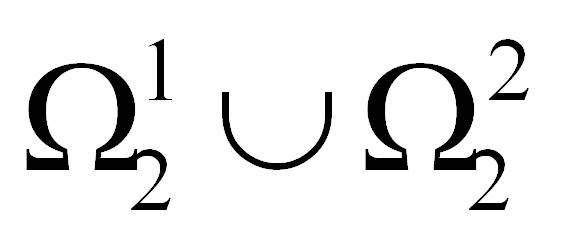 , When the first type of target area
, When the first type of target area  When it is segmented and replaced with the gray average value of the second type target area and the background area, a layer L1 is formed, so that only the second type target area remains in L1, and the remaining area is regarded as the background. When the image to be divided has multiple types of target areas, you can use this idea to separate a certain type of target area one by one until there is no target. The mathematics can be summarized as follows:
When it is segmented and replaced with the gray average value of the second type target area and the background area, a layer L1 is formed, so that only the second type target area remains in L1, and the remaining area is regarded as the background. When the image to be divided has multiple types of target areas, you can use this idea to separate a certain type of target area one by one until there is no target. The mathematics can be summarized as follows:
 with
with  , When the first type of target area
, When the first type of target area  When it is segmented and replaced with the gray average value of the second type target area and the background area, a layer L1 is formed, so that only the second type target area remains in L1, and the remaining area is regarded as the background. When the image to be divided has multiple types of target areas, you can use this idea to separate a certain type of target area one by one until there is no target. The mathematics can be summarized as follows:
When it is segmented and replaced with the gray average value of the second type target area and the background area, a layer L1 is formed, so that only the second type target area remains in L1, and the remaining area is regarded as the background. When the image to be divided has multiple types of target areas, you can use this idea to separate a certain type of target area one by one until there is no target. The mathematics can be summarized as follows: 

Figure 4 Conversion from the original image layer L0 to the new image layer L1
Finally, the layer Ln without any target, that is, the background layer Lbackground:
![]()
The multi-level level set framework still relies on the CV model. Unlike the traditional CV model, the level set function only works on one layer at a time, and iteratively evolves the new layer produced, so the level set function is introduced, layer l The energy function on (l = 0,1,2, ..., n-1) is:

With the same parameters in the CV model, Cl represents the evolution curve on the Ll layer. Introducing the time variable t ≥ 0, the level set evolution equation on Ll can be obtained:
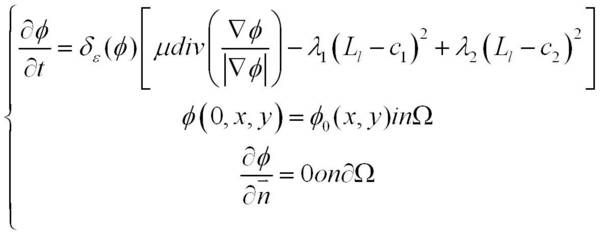
3. Experiment The multiphase CV model introduced above is a parallel model. It can avoid the problem of overlapping coverage and leakage coverage in the area of ​​the level set function without constraints. But multiple level sets may eventually converge to a region, and the model assumes the number of regions in the image. The actual colony image is often very complicated, and it is difficult to manually define the area, so this method will be more troublesome in actual use. The multi-level level set framework belongs to the serial segmentation method of level sets. The contour curve obtained by each segmentation is located inside the contour curve obtained by the previous segmentation, which can ensure that each level set has a different convergence target, and has a subordinate relationship, so it is relatively simple to use. This test mainly uses a multi-level level set frame model.
Figure 5 shows the detection effect of using multi-layer level set frame model for multi-bacteria and multi-characteristic colonies. Among them, Figure 5-a is the original image, Figure 5-b is the segmentation result of the multi-level level set frame model, and Figure 5-c is color-filled inside the segmentation contour for observation. In order to solve the problem of adhesion of some colonies, watershed adhesion was added in the test.
It is not difficult to see from Figure 5, because the level set active contour model segmentation technology is in the process of minimizing the energy function, the active contour is continuously approaching the target to achieve the target segmentation, so there is no excessive on the surface of the mold tiny particles Split phenomenon. In addition, the energy function is based on the grayscale variance inside and outside the contour, so when the active contour shrinks, it will not be affected by the different color of various colonies and cause false segmentation. Except for very few places that are not yet perfect, most colonies have been accurately segmented.
Figure 5 shows the detection effect of using multi-layer level set frame model for multi-bacteria and multi-characteristic colonies. Among them, Figure 5-a is the original image, Figure 5-b is the segmentation result of the multi-level level set frame model, and Figure 5-c is color-filled inside the segmentation contour for observation. In order to solve the problem of adhesion of some colonies, watershed adhesion was added in the test.
It is not difficult to see from Figure 5, because the level set active contour model segmentation technology is in the process of minimizing the energy function, the active contour is continuously approaching the target to achieve the target segmentation, so there is no excessive on the surface of the mold tiny particles Split phenomenon. In addition, the energy function is based on the grayscale variance inside and outside the contour, so when the active contour shrinks, it will not be affected by the different color of various colonies and cause false segmentation. Except for very few places that are not yet perfect, most colonies have been accurately segmented.

Figure 5 Segmentation effect based on multi-level level set frame model
4. Looking forward to the image segmentation method based on the level set active contour model, which has the advantages of strong noise resistance, good numerical solution stability, smooth and continuous segmentation boundary, and can handle complex topological structures. It has become the most advanced image segmentation in the world. One of the technologies. Both the multiphase CV model and the multi-level level set frame model are based on the level set, which has a good effect in solving the multi-object and multi-feature segmentation problem. It provides a feasible method for colony detection of multi-species mixed situations.
However, each iteration calculation of the multiphase CV model and the multi-level level set frame model needs to be initialized, resulting in a large amount of calculation and time-consuming segmentation. As the complexity of the problem increases, its computational complexity also increases significantly. In addition, the initial contour selection of these two methods is also accidental. The size and shape of the pre-selected area will affect the segmentation results, and further research is needed.
5. References
[1] Zheng Gang, Li Yuanlu, Wang Huinan. A new multi-phase level set framework for 3D medical image segmentation based on TPBG [C]. 27th Annual International Conference of IEEE EMBC05, Shanghai, 2005.
[2] Wang Xiaofeng. Level set method and its application in image segmentation [J]. University of Science and Technology of China, 2011 (02).
Hangzhou Xunshu Technology Co., Ltd. R & D Department
However, each iteration calculation of the multiphase CV model and the multi-level level set frame model needs to be initialized, resulting in a large amount of calculation and time-consuming segmentation. As the complexity of the problem increases, its computational complexity also increases significantly. In addition, the initial contour selection of these two methods is also accidental. The size and shape of the pre-selected area will affect the segmentation results, and further research is needed.
5. References
[1] Zheng Gang, Li Yuanlu, Wang Huinan. A new multi-phase level set framework for 3D medical image segmentation based on TPBG [C]. 27th Annual International Conference of IEEE EMBC05, Shanghai, 2005.
[2] Wang Xiaofeng. Level set method and its application in image segmentation [J]. University of Science and Technology of China, 2011 (02).
Hangzhou Xunshu Technology Co., Ltd. R & D Department
Powder Packing Machine,Sugar Packing Machine,Vertical Ffs Packing Machine,Coffee Powder Packaging Machine
Jinan Guoqiang Machinery CO,.ltd , https://www.jinanpackaging.com